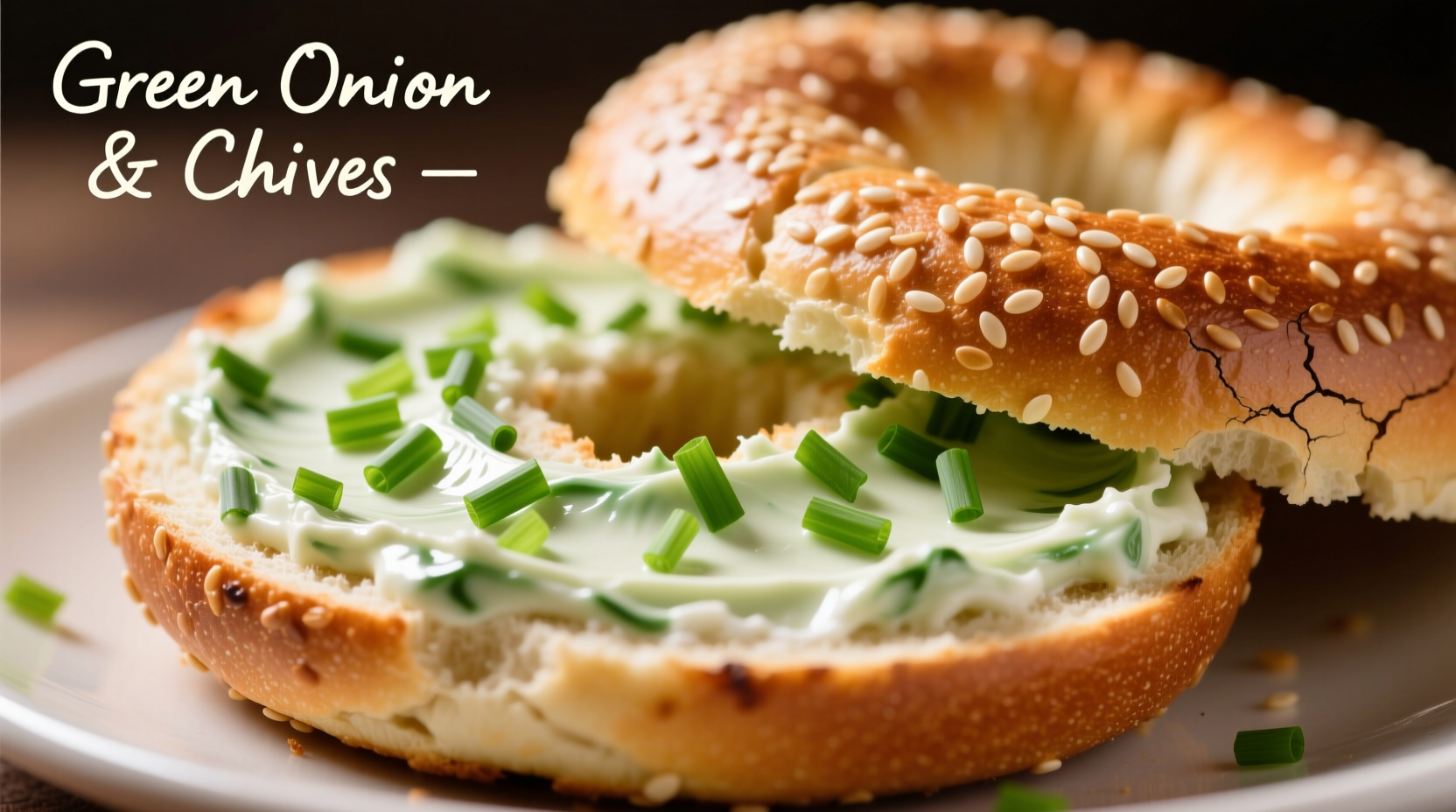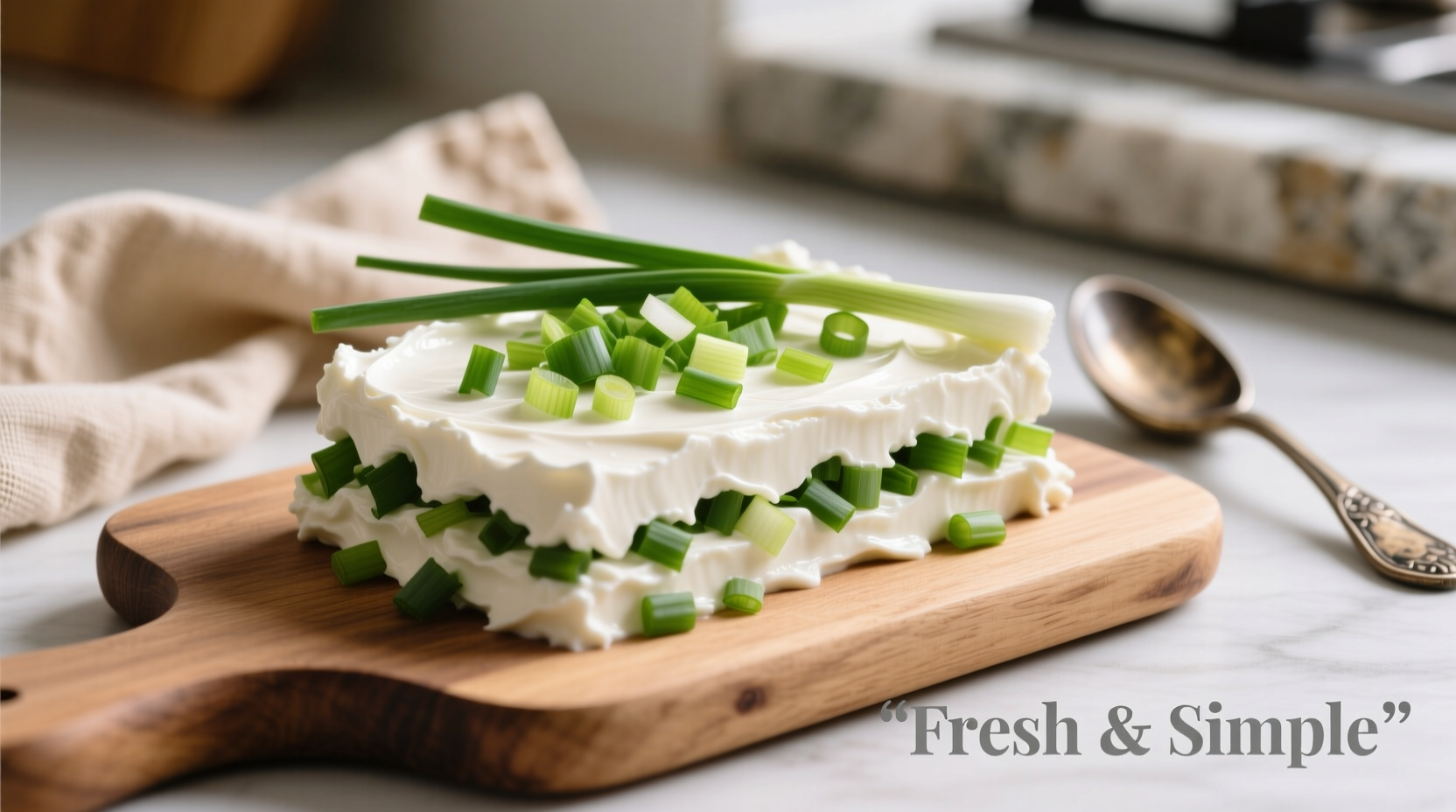Green onion cream cheese is a versatile flavored dairy spread made by blending softened cream cheese with finely chopped green onions, salt, and sometimes additional seasonings. It's commonly used as a sandwich spread, dip for vegetables or crackers, and topping for baked potatoes or bagels, offering a mild onion flavor with creamy texture that enhances numerous dishes without overpowering them.
Discover how this simple yet transformative ingredient can elevate your everyday meals with minimal effort. Whether you're preparing quick weeknight dinners or hosting weekend gatherings, green onion cream cheese delivers restaurant-quality flavor with home kitchen convenience.
Why Green Onion Cream Cheese Deserves a Spot in Your Kitchen
Chef Thomas Keller, renowned for his precise flavor balancing in The French Laundry Cookbook, emphasizes that "well-executed simple preparations often outperform complex dishes." Green onion cream cheese exemplifies this culinary principle. The National Dairy Council confirms that flavored cream cheeses represent 28% of all cream cheese consumption in American households, with onion varieties ranking second only to plain cream cheese in popularity.
| Flavor Profile | Texture | Best Applications |
|---|---|---|
| Mild onion with creamy tang | Smooth, spreadable | Sandwiches, wraps |
| Subtle savory notes | Slightly firm when chilled | Dip for crudités |
| Rich dairy base | Softens at room temperature | Baked potato topping |
Perfect Pairings: What Complements Green Onion Cream Cheese
Understanding flavor chemistry helps maximize your culinary results. The Food Science Department at Cornell University explains that the sulfur compounds in green onions pair exceptionally well with dairy fats, creating a balanced flavor profile that doesn't overwhelm other ingredients. This scientific principle explains why certain combinations work so well:
- Smoked salmon - The rich fat content of salmon complements the creamy texture while the smokiness balances the onion's sharpness
- Whole grain crackers - The nuttiness of whole grains provides textural contrast to the smooth spread
- Roasted vegetables - Particularly asparagus, carrots, and bell peppers which share complementary sulfur compounds
- Bagels with everything seasoning - Creates a flavor synergy where each component enhances the others

Homemade Green Onion Cream Cheese: Better Than Store-Bought
While commercial versions are convenient, making your own allows customization of flavor intensity and texture. According to FDA food safety guidelines, homemade versions should be consumed within 7 days when stored properly in airtight containers.
Professional chef technique: Always use full-fat cream cheese brought to room temperature for 2 hours before mixing. The American Dairy Association confirms that proper temperature management prevents lumps and ensures smooth incorporation of ingredients.
Simple Homemade Recipe
- Softened 8 oz cream cheese (room temperature)
- 3 tablespoons finely minced green onions (both white and green parts)
- 1/4 teaspoon garlic powder (optional)
- 1/8 teaspoon freshly ground black pepper
- Pinch of salt (taste before adding as cream cheese contains sodium)
Mix ingredients thoroughly with a rubber spatula, folding rather than stirring to maintain airy texture. For restaurant-quality results, refrigerate for at least 2 hours before serving to allow flavors to meld. This technique, recommended by the Culinary Institute of America's Professional Baking textbook, develops more complex flavor profiles.
Storage Guidelines: Maximizing Freshness and Safety
Following proper food storage practices is essential for both quality and safety. The USDA Food Safety and Inspection Service specifies that dairy products containing vegetables (like green onions) should be treated as potentially perishable items. Store homemade versions in airtight containers with the surface pressed flat to minimize air exposure, which causes oxidation and flavor degradation.
Commercial products typically contain preservatives that extend shelf life to 14-21 days after opening, while homemade versions should be consumed within 7 days. Always check for signs of spoilage including sour smell, mold, or separation that doesn't reincorporate when stirred.
Common Mistakes to Avoid
Even experienced cooks make these errors that compromise flavor and texture:
- Using cold cream cheese - Creates lumpy texture that's difficult to smooth
- Overmixing - Incorporates too much air, causing separation
- Adding too much onion - Overwhelms the delicate dairy balance (3 tablespoons per 8oz is ideal)
- Using only green parts - Misses the stronger flavor in white sections
Creative Applications Beyond the Obvious
Expand your culinary repertoire with these professional chef techniques:
- Stuffed chicken breasts - Mix with breadcrumbs for a moist filling that stays contained during cooking
- Pasta sauce base - Thin with pasta water for a quick creamy sauce (1:2 ratio with water)
- Deviled eggs - Replace half the yolk mixture with green onion cream cheese for added complexity
- Breakfast burritos - Swirl inside before rolling for evenly distributed flavor
When incorporating into cooked dishes, add during the final stages of preparation to preserve the fresh onion flavor, as prolonged heat diminishes the delicate green onion notes while intensifying sharper compounds.
When to Choose Green Onion Over Plain Cream Cheese
Understanding context boundaries helps make better culinary decisions. Green onion cream cheese shines in applications where:
- You want subtle onion flavor without raw bite
- Creating cold dishes where fresh onions would dominate
- Need consistent flavor distribution (unlike chopped onions)
- Seeking a visually appealing pale green hue in presentations
Plain cream cheese remains preferable when you need a neutral base for sweet applications or when pairing with strongly flavored ingredients that would compete with the onion notes.











 浙公网安备
33010002000092号
浙公网安备
33010002000092号 浙B2-20120091-4
浙B2-20120091-4